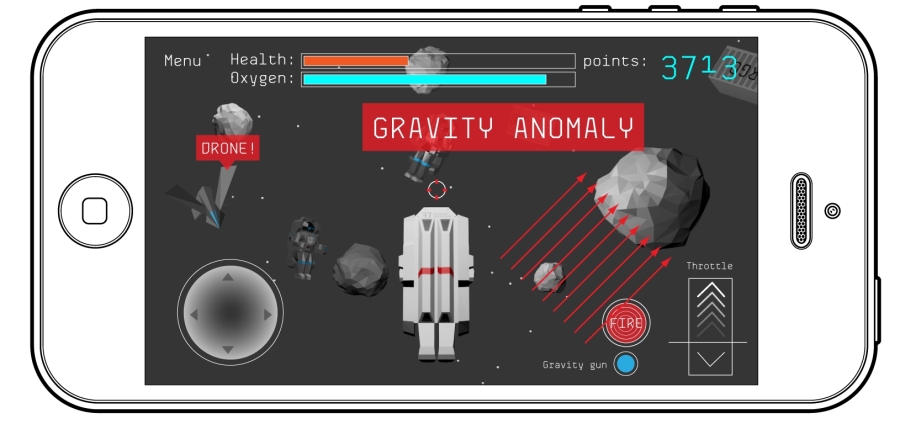Although there are lots of non-realistic elements on the screen of the game (such as various onscreen menus, texts, and graphical hints), their use can be warranted not only by the suspension of disbelief, but also by the plot itself, especially when it is a question of futuristic vehicles, robotic suits, or exoskeletons. Any onscreen alerts, text messages, graphic hints, and many more can be explained via utilizing a HUD. Such technology is a familiar cockpit element of modern aircrafts or advanced cars. Various useful data is projected on special transparent plates so that pilots (or drivers) see through it, perceiving both the physical space in front of them and additional digital information. It is a form of augmented reality created by combining two types of realities. By saying that an apparatus in the game has an advanced HUD, you may stop to question all the virtual sights, health bars, and other types of vital UI-elements; now, they are realistic.

The AMU features the HUD as well; moreover, it is a flying vehicle; so, the virtual display is very good. At the very beginning, it teaches the player by displaying hints and captions. It also highlights the enemies and hazard obstacles. Sometimes, it shows different alerts telling you about the state of the Unit when it is losing energy or oxygen. But the most important thing is that in critical moments, it always tries to cheer up the player via polite commentaries such as: "The Unit is out of oxygen. You will probably die. Sorry" or "The Unit is out of energy, but there are some enemies. I will miss you." To attach the player to it, you should give the machine some portion of personality. So, let it talk more in a different context. In most cases, the phrases should be full of a robot-like sincerity and directness. However, this can be considered as unintentional black humor and even cynicism. AI may sound rude, but there is nothing personal; it is simply doing its job. But for the astronaut, the HUD is the only friend.
Virtual display graphics should be very laconic, featuring simple geometric shapes without any ornamentation and minimalistic angular fonts (such as the optical character recognition (OCR) font family, SkyhookMono, and Arame). The basic point is the contrast with the environment; the images must be easy recognizable. It is good to display text messages on semitransparent rectangles. Their color may have a signal function, for example, critical alerts should be in red.
